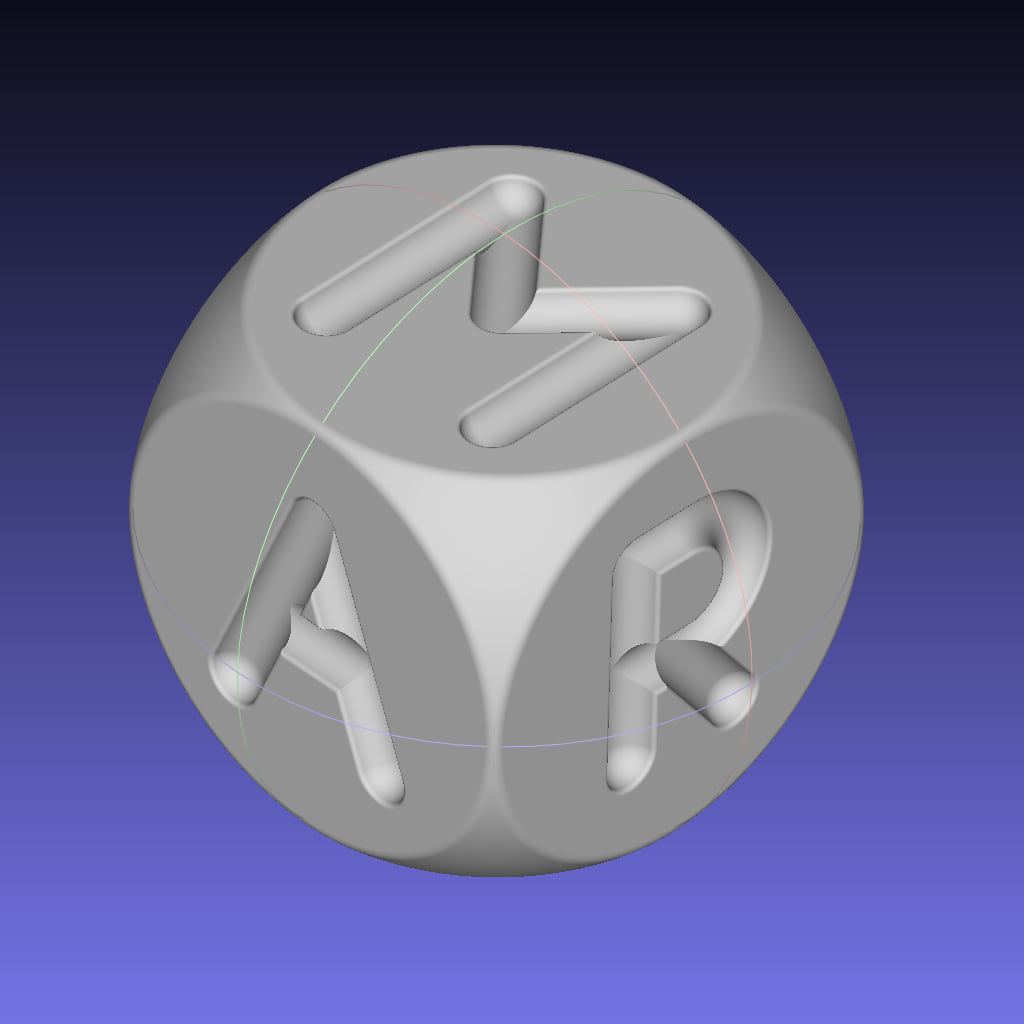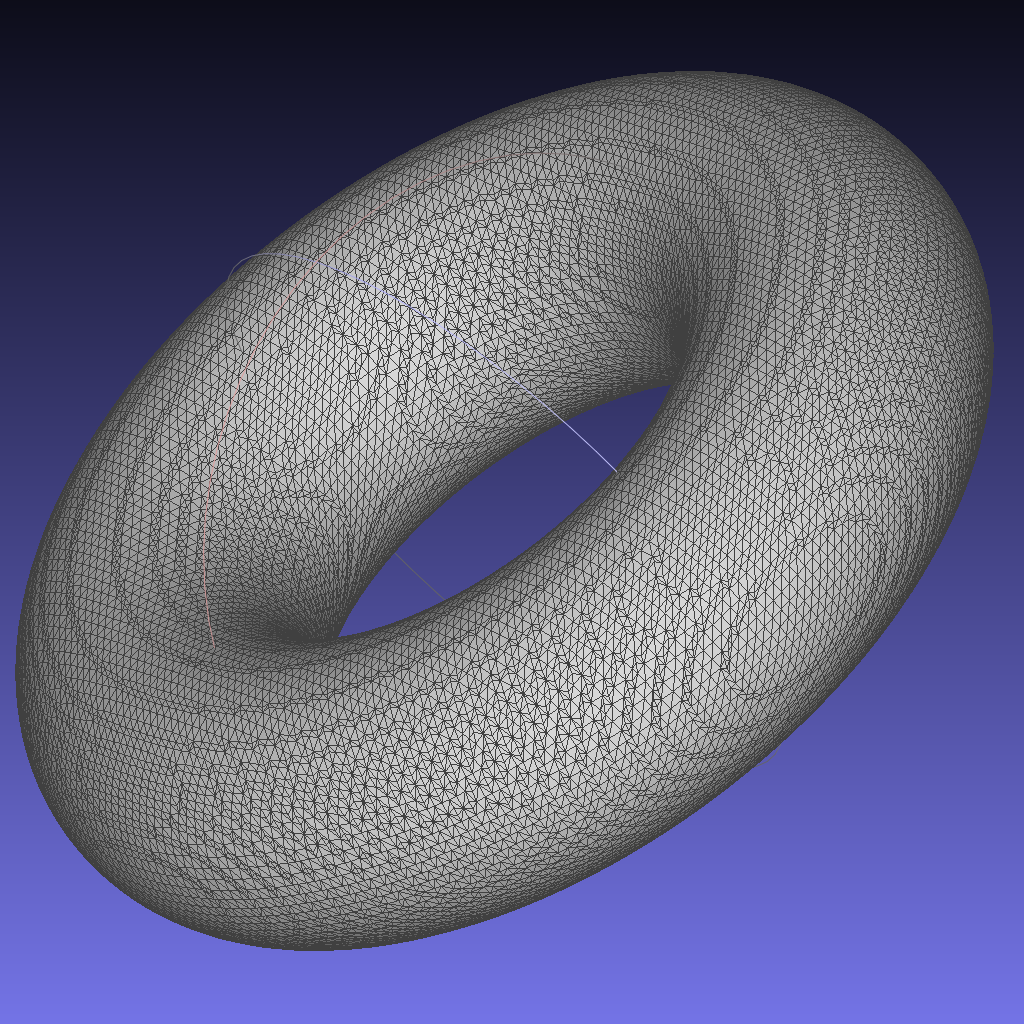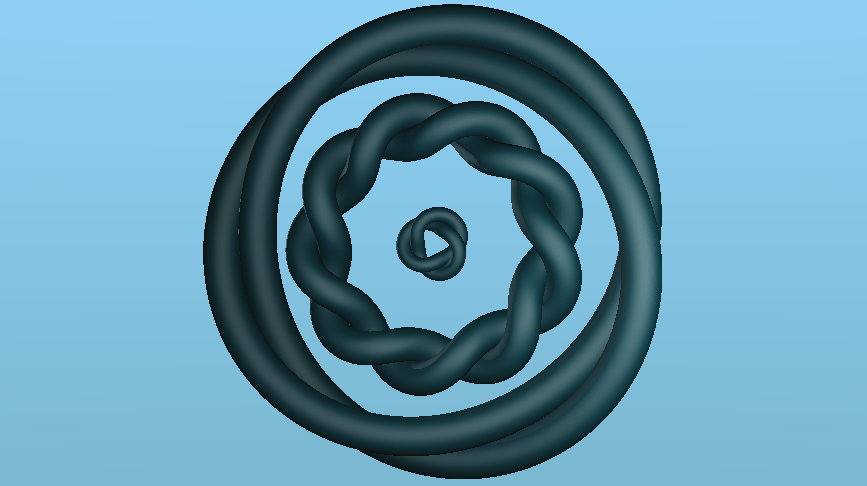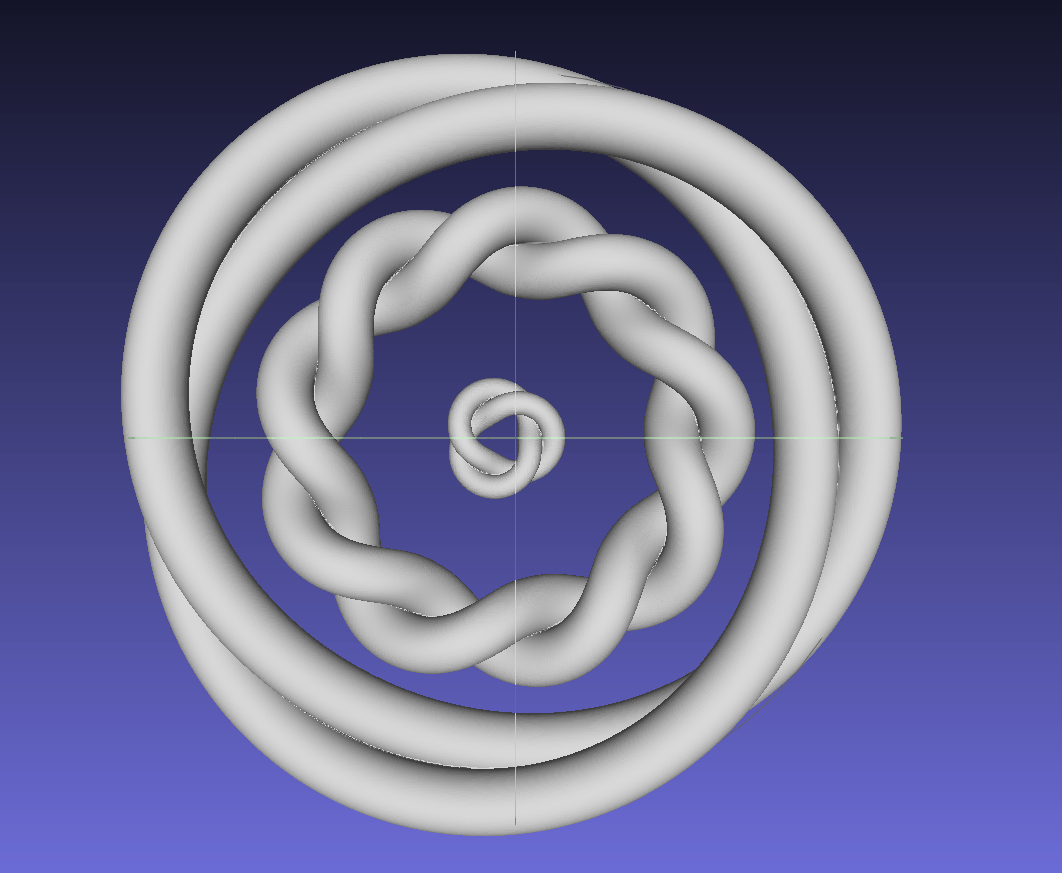1 unstable release
| 0.1.0 | Jan 5, 2025 |
|---|
#279 in Graphics APIs
1MB
1.5K
SLoC
sdf2mesh
sdf2mesh generates triangle meshes from SDFs using dual contouring and WGPU.
SDF can process the following inputs:
- SDFs given as WGSL shader, see
examples/torus.sdf3d - SDFs given as GLSL shader, see
examples/mandelmesh.frag - Shaders from ShaderToy, retrieved via ShaderToy API, see below.

Examples
The example examples/torus.sdf3d reads an SDF defined in this file and renders it with resolution 128x128x128 and writes it to torus.stl.
cargo run -- --sdf examples/torus.sdf3d --resolution 128 --mesh torus.stl
If we run the app with
cargo run -- --sdf examples/torus.sdf3d --resolution 128 --mesh torus.stl
The output mesh looks like this:

It is also possible to generate a mesh via a GLSL fragment shader that has a SDF function with the signature float (vec3):
cargo run -- --glsl .\examples\mandelmesh.frag --resolution 512 --mesh mandelmesh.stl --bounds 5
You can also generate a mesh from ShaderToy directly:
cargo run -- --shadertoy-id DldfR7 --resolution 256 --mesh shadertoy.stl --bounds 5
How it works
What is an SDF?
Imagine you have a solid figure, like a sphere or a box. The signed distance function (SDF) for a point in space tells you how far away that point is from the nearest point on the boundary of the shape.
Now, the "signed" part is what makes it interesting. It not only tells you the distance but also whether the point is inside or outside the shape. If the point is inside, the distance is negative, and if it's outside, the distance is positive. If the point is exactly on the boundary, the distance is zero.
So, in simple terms, a signed distance function is like a magic function that, for any point in space, tells you both how far away you are from the nearest point on a shape and whether you're inside or outside that shape. It's a useful concept in computer graphics, physics simulations, and other fields where understanding distances to solid figure is important.
SDF definition
The SDF is defined in an input file with extension sdf3d.
The file actually contains WGSL code.
A definition for a torus with radius 0.5 and width 0.2 looks like this:
use sdf3d::*;
fn sdf3d(p: vec3f) -> f32 {
return sdf3d_torus(p, vec2(0.5, 0.2));
}
use sdf3d::* imports a set of functions for primitives. The function sdf3d_torus is such a predefined primitive.
The sdf3d function defines the actual SDF and has a position as input and a distance value as output.
That's all!
SDF rendering
In order to convert the SDF into a triangle mesh, we need evaluate the SDF for each cell (X,Y,Z) with a certain resolution. If the signs are different for the corners of the cell, we have to generate triangles.
This process is called Dual Contouring. You can find a nice visualization of the process here.
In order to save memory, this process is done slice by slice instead rendering the SDF into a voxel grid.
Running sdf2mesh
If we run the app with
cargo run -- --sdf examples/torus.sdf3d --resolution 128 --mesh torus.stl
We get the following output:

Considerations when generating a mesh
- Make sure you use a proper bounding box that fits the size of your SDF. The command line argument
--bounds 2will create a centered bounding box with size2. This also means your SDF should be always centered. - Meshes grow O(n^3) with resolution. This means the STL file of a mesh generated with a resolution of 2048 can be several GBs in size!
- The dual-contouring algorithm still has some problems with certain triangle constellations and precision. In this case, an invalid quad will be created and the mesh will have a hole. This happens more often with higher resolutions.
- Use post-processing to simplify and possibly fix your mesh.
Generating a Mesh from ShaderToy fragment shader

The following command downloads a shader from the ShaderToy API and converts from GLSL to WGSL using naga:
cargo run -- --shadertoy-id XX3Xzl --resolution 512 --mesh shadertoy.stl --debug-wgsl test.wgsl --bounds 2 --shadertoy-sdf map
The shader must define a function float sdf(vec3 p) which calculates the SDF.
In the example above, we can use the --shadertoy-sdf to use a different name, e.g. map. However, while the name of the function can be arbitrary, its signature must always be float (vec3 p).
Some more considerations:
- Because the shader is compiled from GLSL to WGSL, compilation might fail in certain cases. Use the debug option
--debug-wgsl test.wgslto write the resulting WGSL intotest.wgslto spot possible errors. (Filing issues is welcome :) - Buffers and Channels are not supported (yet).
- If you want to use your custom shader from ShaderToy, make sure you use public + API setting when publishing.

TODO
- SDF viewer app
- Rendering time estimation
- Better error handling
- More primitives and built-in functions
Known issues
- When the SDF is out of bounds, mesh generation might fail
- Crashes with resolutions above 2048
Dependencies
~9–42MB
~648K SLoC